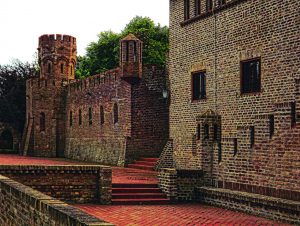Macapá is also known as the Capital of the Middle of the World for being the only Brazilian city crossed by the Equator line. From there you can watch the spring (March) and fall (September) equinoxes, when the days and nights have the same duration.
Favored by its strategic location, bathed by the Amazon river, Amapá’s capital hides a military architecture treasure from the 18th century: the Fortress of São José de Macapá, built to defend the Brazilian territory during the Portuguese colonization of the Amazon.
The Amazon river boat ride is the most classical and traditional ecotourism ride in Macapá. Interesting fact: during the flood season, the Amazon river is great for doing water sports. By boat it is also possible to visit Ilha do Marajó, Belém and Santarém.

Among the tourist spots in the urban area, there is the Middle of the World Park, with many activities; the Eliezer Levy Pier, where the boats arriving in Macapá used to dock; the Zero Milestone Complex, a free tourist attraction 2 km from the city center that includes the Zero Milestone Monument, Zerão Stadium and the sambadrome, where, during Carnival, samba schools have an energetic and colorful parade with floats and dancers.
Macapá is a mix of cultures. The drum ruffling and the marabaixo dance, a kind of improvised choreography that goes on for several days and nights, echoes back to the suffering slaves that helped build the city. The quilombola community in Curiau, 12 km from Macapa, preserves their almost intact culture surrounded by the green forest.
The gastronomy in Amapá is closely tied to the region’s first native Brazilian inhabitants. The dishes made with Amazonian products and spices, like gurujiba – a fish amply found in the region -, steamed shrimp and vatapa, delight state residents and tourists alike.
Source: www.visitbrasil.com



